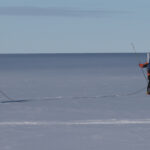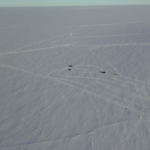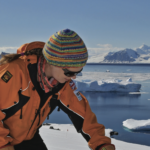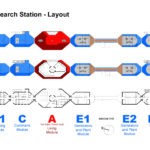RIFT-TIP is a NERC-funded scientific project investigating iceberg calving and fracture growth in ice shelves. The RIFT-TIP team will work primarily out of Halley Research Station, using seismic, radar, ApRES and GPS data to investigate the evolution of cracks on the Brunt Ice Shelf. The project will drill shallow ice cores and acquire samples for laboratory testing in Cambridge in order to observe variation in physical properties of the ice, including fracture toughness.
The Brunt Ice Shelf has a long history of strain monitoring and in the last decade has seen the growth of several rift features such as Chasm-1 and Halloween Crack. Two large icebergs (A-74 and A-81) have calved in the last three years. New field and laboratory observations made as part of RIFT-TIP will be used to reinterpret existing measurements of crack behaviour from these events alongside information from satellite imagery. The geophysical data will feed into a viscoelastic fracture model of the ice shelf to identify how ice properties and local stresses influence the timing of crack growth and calving.
RIFT-TIP has four objectives, scaling up observations from individual crystal interactions to ice shelf wide dynamics. The objectives form a clear pathway to predicting the temporal evolution of large fractures in ice, not previously possible. The work is designed to bridge the gap between small-scale laboratory observations, and regional-scale ice dynamics. Our objectives are:
1/ Experimentally determine fracture toughness for two distinct ice types and define the relationships between fracture and local ice properties.
2/ Model the growth of historic rifts (in particular timing) by imposing a spatial variability in fracture toughness and matching the ice shelf evolution to a dataset of ground and satellite observations spanning the last 10 years.
3/ Test the ability of a phase-field fracture model (KRAKEN) to simulate the energy balance and damage at a present-day rift tip under high strain using new observations of micro-seismicity associated with elastic energy release, and mapping of location of initial cracks in un-fractured ice.
4/ Predict the evolution of future rifts in a viscoelastic stress regime, using a complete dataset of ice properties, strain and initial crack distribution.
19 April, 2024 by Emma Pearce
Understanding what is going on inside an ice shelf is important for many reasons. But mostly, it allows us to better understand their contribution to sea level rise, and to …
16 April, 2024
Scientists are a step closer to being able to predict when large icebergs will calve in Antarctica. A team of glaciologists will present their new results at the European Geoscience …
8 January, 2024
Halley Research Station, Antarctica – A team of scientists from the British Antarctic Survey (BAS) is gearing up for an expedition to the Brunt Ice Shelf in Antarctica to unravel …
19 October, 2023
The Antarctic field season has started, with over 600 people beginning the journey South to work on over 60 projects on station and in the field. The season of work …
Halley Research Station - Module Layout




